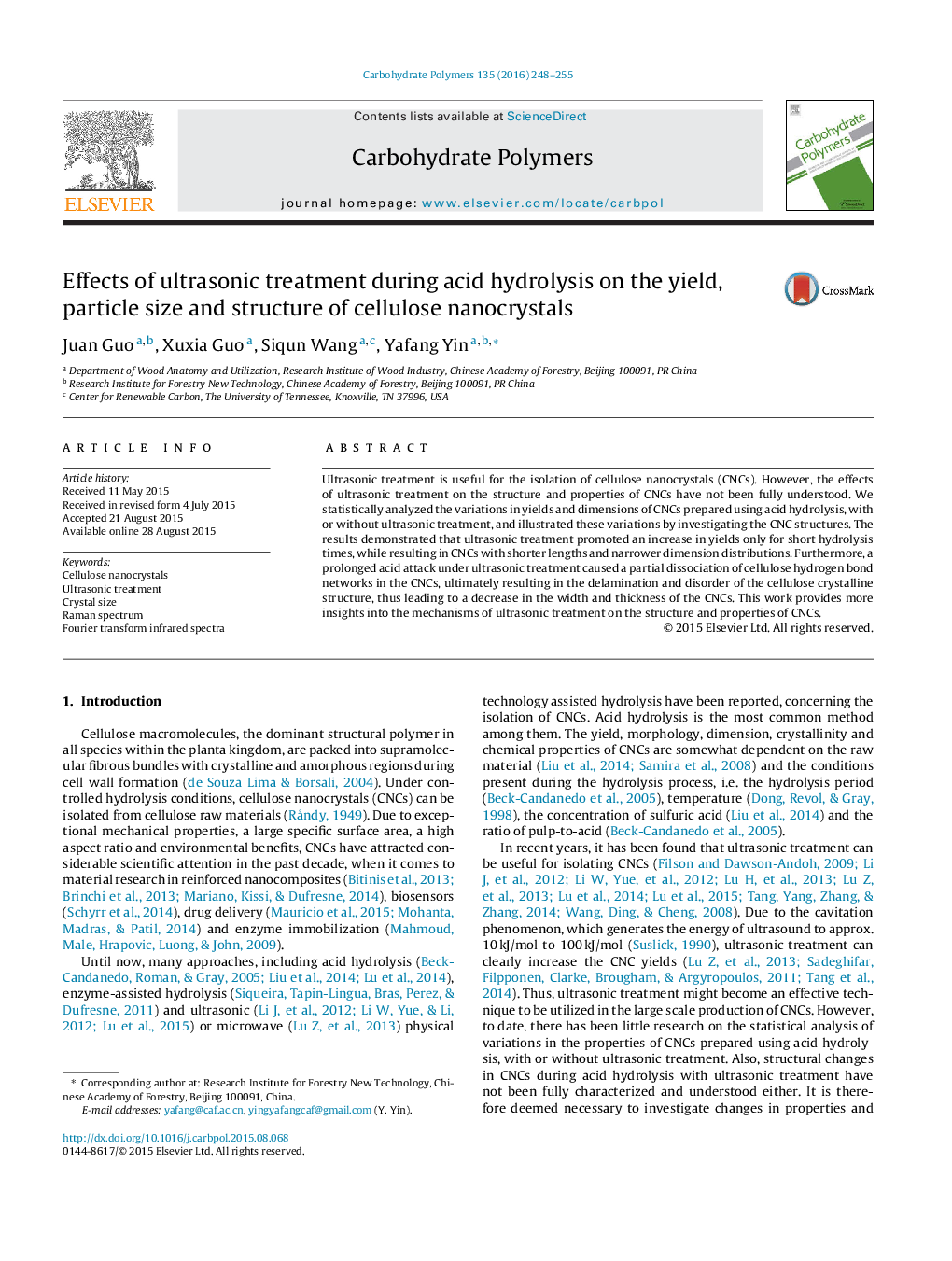| Article ID | Journal | Published Year | Pages | File Type |
|---|---|---|---|---|
| 1383568 | Carbohydrate Polymers | 2016 | 8 Pages |
•Ultrasonication had no effect on CNC yield except at short hydrolysis times.•Yield did not increase further with hydrolysis time beyond some optimal time.•Ultrasonication led to a smaller size and smaller crystallite structure.•Ultrasonication led to disorder and delamination of cellulose crystalline structure.•Exhaustive hydrolysis had the same effect on properties of CNCs as ultrasonication.
Ultrasonic treatment is useful for the isolation of cellulose nanocrystals (CNCs). However, the effects of ultrasonic treatment on the structure and properties of CNCs have not been fully understood. We statistically analyzed the variations in yields and dimensions of CNCs prepared using acid hydrolysis, with or without ultrasonic treatment, and illustrated these variations by investigating the CNC structures. The results demonstrated that ultrasonic treatment promoted an increase in yields only for short hydrolysis times, while resulting in CNCs with shorter lengths and narrower dimension distributions. Furthermore, a prolonged acid attack under ultrasonic treatment caused a partial dissociation of cellulose hydrogen bond networks in the CNCs, ultimately resulting in the delamination and disorder of the cellulose crystalline structure, thus leading to a decrease in the width and thickness of the CNCs. This work provides more insights into the mechanisms of ultrasonic treatment on the structure and properties of CNCs.
